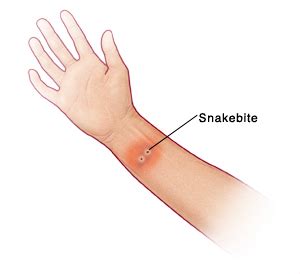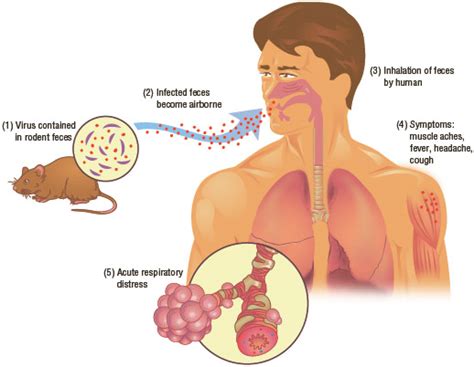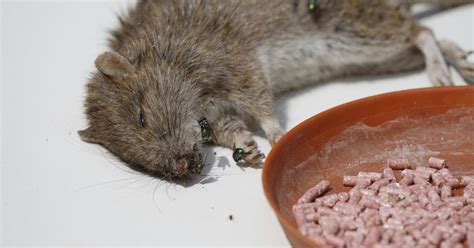
Snakebite Poisoning
Understanding Snakebite Poisoning
Snakebite poisoning is a serious medical condition that occurs when a person is bitten by a venomous snake. It is important to understand the nature of snakebite poisoning in order to effectively manage and treat it.
When a venomous snake bites a person, it injects venom into the body. This venom is a potent cocktail of proteins and enzymes that can cause a wide range of symptoms and complications. The severity of snakebite poisoning can vary depending on factors such as the type of snake, the amount of venom injected, and the location of the bite.
There are various types of venomous snakes around the world, each with their own unique venom composition and effects. Some common types of venomous snakes include the cobra, rattlesnake, and black mamba. It is important for individuals living in or traveling to areas where venomous snakes are present to familiarize themselves with the types of snakes in the area and their associated venom.
Types of Venomous Snakes
When it comes to venomous snakes, there are a variety of species across the world that possess venom capable of inflicting harm to humans. It is important to understand the different types of venomous snakes to better educate ourselves on their characteristics and potential dangers they may pose. In this blog post, we will explore some of the most well-known and dangerous species of venomous snakes.
One of the most famous and feared venomous snakes is the King Cobra (Ophiophagus hannah). Found primarily in the forests of Southeast Asia, the King Cobra is the longest venomous snake in the world, capable of reaching lengths of up to 18 feet. It is known for its impressive hood, intimidating hiss, and potent neurotoxic venom that can cause paralysis and even lead to death if left untreated.
Another venomous snake species worth mentioning is the Rattlesnake (Crotalus). Rattlesnakes are native to the Americas and are identified by the rattling sound they produce by shaking their specialized tail segments called “rattles.” Their venom is hemotoxic, causing tissue damage, organ failure, and in some cases, severe bleeding. There are several species of rattlesnakes, including the Western Diamondback, Eastern Diamondback, and Sidewinder, each with their own unique characteristics and habitats.
The Inland Taipan (Oxyuranus microlepidotus), found in remote parts of Australia, is considered the most venomous snake in the world. Its venom is incredibly potent, capable of causing respiratory paralysis within minutes. However, the Inland Taipan is known to be shy and generally avoids human contact, making encounters with the snake relatively rare.
- King Cobra: Known for its length, hood, and neurotoxic venom.
- Rattlesnake: Identified by their rattling tail and hemotoxic venom.
- Inland Taipan: Considered the most venomous snake with potent venom.
| Snake Species | Characteristics | Venom Type |
|---|---|---|
| King Cobra | Longest venomous snake with a hood | Neurotoxic |
| Rattlesnake | Rattles on the tail, found in the Americas | Hemotoxic |
| Inland Taipan | Shy snake found in remote parts of Australia | Neurotoxic |
These are just a few examples of the many venomous snakes that exist throughout the world. It is crucial to educate ourselves about their habitats, behaviors, and venomous characteristics to ensure our safety and the safety of others when encountering these fascinating yet potentially dangerous creatures.
Symptoms and Signs of Snakebite Poisoning
The symptoms and signs of snakebite poisoning can vary depending on various factors such as the type of snake, the amount of venom injected, and the location of the bite. It is important to recognize these symptoms and signs in order to provide appropriate medical care and treatment to the affected individual.
Some common symptoms and signs of snakebite poisoning include:
- Pain at the site of the bite: The person may experience immediate pain at the site where the snake has bitten. The severity of the pain can vary.
- Swelling and redness: Swelling and redness around the bite area are common symptoms. The extent of swelling can vary depending on the amount of venom injected.
- Local tissue damage: In some cases, the venom can cause significant tissue damage near the bite site. This can result in the formation of blisters, necrosis, or tissue death.
- Difficulty breathing: Certain venomous snakebites can lead to respiratory distress. The person may experience shortness of breath, wheezing, or difficulty in breathing.
- Weakness and dizziness: Systemic effects of snakebite poisoning can cause weakness, dizziness, and even fainting. The individual may feel lightheaded or have a rapid heart rate.
- Nausea and vomiting: Some snakebites can lead to gastrointestinal symptoms such as nausea, vomiting, and abdominal pain.
It is important to note that these symptoms and signs may not all occur simultaneously or in every snakebite case. Some individuals may experience a delayed onset of symptoms, while others may have a more rapid progression.
Snakebite poisoning can be a life-threatening emergency, and it is essential to seek immediate medical attention if someone has been bitten by a venomous snake. Remember to stay calm, immobilize the affected limb if possible, and remove any constricting items such as jewelry or clothing near the bite site. Do not attempt to suck out the venom or use a tourniquet as these methods are not effective and may even worsen the situation.
By being aware of the symptoms and signs of snakebite poisoning, you can play a crucial role in ensuring timely medical intervention and improving the chances of a successful recovery for the affected individual.
Emergency First Aid for Snakebite
Emergency First Aid for Snakebite
When it comes to snakebites, time is of the essence. In the event of a snakebite, it is crucial to provide immediate first aid to the victim. The first step is to stay calm and try to keep the affected person calm as well. Panicking will only worsen the situation. It is important to remember that not all snakebites are venomous, but it is always safer to treat them as such.
Next, call for medical help right away. Dial emergency services or take the victim to the nearest healthcare facility. While waiting for professional medical assistance to arrive, there are a few important dos and don’ts to follow. Do immobilize the affected limb or body part as much as possible. This will help slow down the venom’s spread. Do remove any tight clothing or accessories from the area, as swelling is likely to occur. However, do not try to suck out the venom or use a tourniquet, as these methods can cause more harm than good.
Now, let’s look at some specific first aid measures that can be taken depending on the type of snakebite. If the snakebite is on an extremity, such as an arm or a leg, elevate the limb slightly. This can help in reducing swelling. However, keep the affected body part below heart level to prevent the venom from spreading rapidly through the bloodstream. If the snakebite is on the face or neck, keep the victim in an upright position to ease breathing.
List of First Aid Measures:
- Stay calm and keep the victim calm
- Call for medical help immediately
- Do immobilize the affected limb or body part
- Remove any tight clothing or accessories
- Do not suck out the venom or use a tourniquet
- If possible, elevate the limb slightly
- Keep the victim in an upright position if the bite is on the face or neck
In addition to these measures, monitor the victim’s vital signs such as breathing, pulse, and blood pressure. If the person goes into shock or loses consciousness, initiate CPR if trained to do so or wait for medical professionals to take over. It is essential to provide reassurance and keep the victim as comfortable as possible while waiting for medical assistance.
| Type of Snakebite | First Aid Measures |
|---|---|
| Venomous Snakebite | Apply pressure immobilization bandagingKeep the victim still and calm |
| Non-venomous Snakebite | Wash the wound gentlyApply antibiotic ointment and dress the wound |
Remember, the information provided here is only a general guide to emergency first aid for snakebites. It is always recommended to seek immediate medical attention for any snakebite, as professional expertise is crucial for the proper treatment and management of the injury.
Preventing Snakebite Incidents
When it comes to snakebites, prevention is always better than cure. While snakebite incidents can be rare, it is essential to take proactive measures to minimize the risk of encounters with venomous snakes. By educating yourself and following a few simple guidelines, you can greatly reduce the chances of a dangerous snake encounter.
One of the key steps in preventing snakebite incidents is to stay informed about the types of venomous snakes that are prevalent in your region. Different species of snakes have different habitats and behaviors, so understanding their patterns can help you avoid areas where they are likely to be found. It is advisable to consult with local wildlife experts or join community groups dedicated to snake awareness to stay updated with relevant information.
To further protect yourself from snakebites, it is crucial to be observant of your surroundings while exploring outdoor areas. When hiking or walking in grassy or wooded areas, make sure to stay on designated trails and avoid stepping on tall grass or bushes, as snakes may hide there. Additionally, wear appropriate footwear and clothing that covers your legs and ankles to minimize the risk of a snakebite.
Another vital aspect of preventing snakebite incidents is understanding snake behavior. Snakes are typically more active during warmer months and are known to bask in the sun to regulate their body temperature. Therefore, be cautious when approaching rocks, fallen logs, or sunny patches on the ground, as snakes may be seeking warmth in these areas. By being aware of their habitat preferences and behavioral patterns, you can reduce the chances of an unfortunate encounter with a snake.
- Stay informed about venomous snakes in your region
- Stay on designated trails and avoid tall grass or bushes
- Wear appropriate footwear and clothing to minimize risk
- Be cautious around rocks, fallen logs, and sunny patches
| Preventive Measures | Advantages |
|---|---|
| Stay informed | Minimizes the chances of encountering venomous snakes |
| Stick to designated trails | Reduces the risk of stepping on hidden snakes |
| Wear protective clothing | Provides a physical barrier against snakebites |
| Be cautious around specific areas | Decreases the likelihood of disturbing resting snakes |
Frequently Asked Questions
Q1: What are the types of venomous snakes that can cause snakebite poisoning?
A1: Some of the types of venomous snakes that can cause snakebite poisoning include rattlesnakes, copperheads, cottonmouths (water moccasins), and coral snakes.
Q2: What are the common symptoms and signs of snakebite poisoning?
A2: The common symptoms and signs of snakebite poisoning may include localized pain and swelling, redness and bruising around the bite area, difficulty breathing, nausea and vomiting, blurred vision, dizziness, and muscle weakness.
Q3: What should be the immediate emergency first aid for a snakebite?
A3: The immediate emergency first aid for a snakebite includes keeping the affected person calm, restricting their movement, washing the bite area with soap and water, and keeping the bitten body part elevated while attempting to reach medical help.
Q4: How can snakebite incidents be prevented?
A4: Snakebite incidents can be prevented by wearing appropriate protective clothing in high-risk areas, such as boots and long pants, avoiding tall grass and brush where snakes may hide, using a flashlight when walking at night, and being cautious when reaching into dark, enclosed spaces.
Q5: Should I try to capture or kill the snake for identification after a snakebite?
A5: No, it is not recommended to try to capture or kill the snake for identification after a snakebite. It is best to focus on seeking immediate medical attention and let healthcare professionals identify the snake based on the symptoms and signs.
Q6: How long does it take for snakebite symptoms to appear?
A6: The time it takes for snakebite symptoms to appear can vary depending on factors such as the type of snake and the amount of venom injected. In some cases, symptoms may appear within minutes, while in other cases, they may take several hours to manifest.
Q7: Can antivenom be administered at home for snakebite treatment?
A7: No, antivenom should not be administered at home for snakebite treatment. It should only be administered by healthcare professionals in a medical facility equipped to handle snakebite cases.


